ISC (Arts)
Academic Year: 2024-2025
Date: एप्रिल 2025
Advertisements
- You are allowed an additional 15 minutes to read the question paper.
- You must NOT start writing during reading time.
- This question paper has 9 printed pages.
- The paper has three sections: A, B, and C. Internal choices have been provided in two questions each in Sections B and C.
- Answer all questions.
- While answering Multiple Choice Questions in Section A, you are required to write ONLY one option as the answer.
- Section A consists of one question each subpart carrying one mark.
- Section B consists of eight questions each carrying four marks.
- Section C consists of four questions each carrying eight marks.
- The intended marks for questions are given in brackets [ ].
“The mantra is ‘Do or Die’. We shall either free India or die in the attempt; we shall not live to see the perpetuation of slavery.”- Mahatma Gandhi.
Identify the Movement for which the mantra became the battle cry.
Non-Cooperation Movement.
Civil Disobedience Movement.
Quit India Movement.
Delhi Chalo Movement.
Chapter: [0.013000000000000001] National Movement During the Second World War
Who among the following Prime Ministers priortised self-reliance and is still remembered through his slogan “Jai Jawan, Jai Kisan”?
Jawaharlal Nehru
Indira Gandhi
Lal Bahadur Shastri
Morarji Desai
Chapter: [0.031] The Role of the Syndicate
Which of the following events is considered to be Hitler’s greatest triumph and Chamberlain’s supreme act of appeasement?
The Anschluss.
The Munich Agreement.
The Rome-Berlin Axis.
The Anglo-German Naval Agreement.
Chapter: [0.07] World War II
The following is a picture of the famous trio of the Janata government, waiting for the swearing-in ceremony at the Rashtrapati Bhawan in 1977. Which one of the following BEST describes the reason for its short-lived tenure?
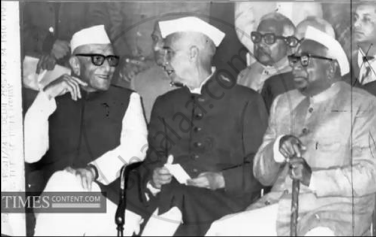
Ideological differences within the Janata government over economic policies.
Disagreements within the Janata government on foreign policy.
Struggle for power and control among the leaders of the Janata government.
Conflicting views on social welfare programmes.
Chapter: [0.040999999999999995] The Janata Government (1977 – 1979)
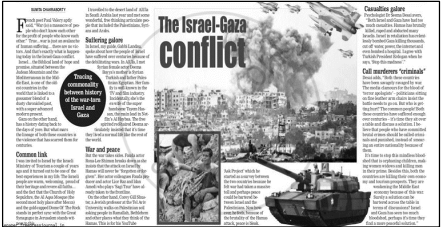
The extract given above is on a report of the Israel-Gaza conflict. Which of the following principles of the Panchsheel Agreement was violated by the Israel-Gaza conflict?
(P) Mutual respect for each other’s territorial integrity and sovereignty.
(Q) Non-aggression.
(R) Non-interference in each other’s internal affairs.
(S) Equality and mutual benefit.
Only (P) and (S)
Only (Q) and (R)
Only (R) and (S)
Only (P) and (Q)
Chapter: [0.051] Non-aligned Movement (NAM)
Assertion: On 6th July, 1945 the Americans dropped an atom bomb on Hiroshima.
Reason: On 7th December 1941, the Japanese attacked Pearl Harbour without any declaration of war.
Both Assertion and Reason are true and Reason is the correct explanation for Assertion.
Both Assertion and Reason are true but Reason is not the correct explanation for Assertion.
Assertion is true and Reason is false.
Both Assertion and Reason are false.
Chapter: [0.07] World War II
Which of the following initiatives has goals similar to the Five-Year Plan initiated in China by Mao Zedong?
Make in India initiative to promote manufacturing of products to attract foreign direct investment in India.
Green Revolution initiative to boost agricultural productivity in India using modern technologies.
Digital India initiative to ensure digital access and inclusion to turn India into a knowledge-based economy.
Atal Innovation Mission policy to encourage innovation and entrepreneurship among Indian students and start-ups.
Chapter: [0.08] De-colonisation – in Asia (China) and Africa (Ghana and Keny
Identify the key difference between the Molotov Plan and the Marshall Plan.
The Molotov Plan was introduced by the USA while the Marshall Plan was introduced by the USSR.
The Marshall Plan was for the benefit of the East European countries and Molotov Plan was for the Western European countries.
The Molotov Plan was introduced by the USSR and the Marshall Plan was introduced by the USA.
The Molotov Plan was a reaction to the Marshall Plan
Chapter: [0.091] Origins of the Cold War
The first Lok Sabha election was held on the principle of ______.
Chapter: [0.02] Establishment and Development of Indian Democracy (1947 – 1966).
On 4th April 1959, Prime Minister Jawaharlal Nehru announced in Parliament that the Dalai Lama crossed into Indian territory last Tuesday and had been granted political asylum. State any one impact this event had on the Indo-Sino ties in 1959.
Chapter: [0.053] Sino-Indian War
Expand AASU.
Chapter: [0.042] Return of Congress to Power (1979 – 1986).
Advertisements
The image given below shows the cover page of the book Total Revolution or Sampoorna Kranti.
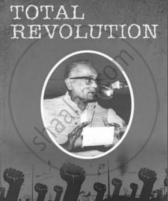
Name the author who spearheaded the Movement on the cover page of the book.
Chapter: [0.08] De-colonisation – in Asia (China) and Africa (Ghana and Keny
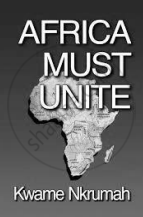
Refer to the image given above and name the organisation that Kwame Nkrumah established.
Chapter: [0.091] Origins of the Cold War
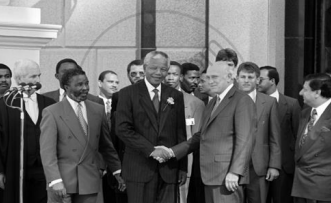
In the picture shown above, the African President Nelson Mandela can be seen shaking hands with ______ who championed the cause of transition to black majority rule in South Africa.
Chapter: [0.07] World War II
The Governor of an American state, attempted to prevent nine Black students from entering a high school. The plight of these students drew national attention later.
Why was this event significant during the Civil Rights Movement?
Chapter: [0.1] Protest Movements
Mention any one provision of the Equal Pay Act of 1963 that impacted the status of women in America.
Chapter: [0.06] Movements for Women’s Rights
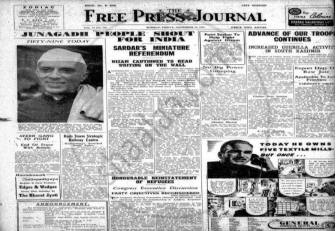
With reference to the news extract given above, state any four circumstances that led to the fulfilment of wishes of the people of Junagadh and its eventual accession to the Indian union.
Chapter: [0.02] Establishment and Development of Indian Democracy (1947 – 1966).
The Prime Minister of India Mrs. Indira Gandhi declared a national emergency in 1975. When questioned about the legality of the 42nd Constitution Amendment Act, 1976, she responded that the essence of parliamentary democracy made Parliament supreme.
In the above context, analyse the impact of the 42nd Constitution Amendment Act, 1976 on the democratic system in India.
Chapter: [0.034] Emergency (1975-76)
In 1979, AASU and the All Assam Gana Sangram Parishad (AAGSP) began a series of protests across Assam. The educational institutions in the state remained shut for a long time. Periodic strikes at times turned violent. This was the start of a six-year agitation led by students.
Based on the above report, state any four reasons for the agitation.
Chapter: [0.042] Return of Congress to Power (1979 – 1986).
How did the Bandung and Belgrade Conferences lead to the formation and development of the Non-Aligned Movement (NAM)?
Chapter: [0.051] Non-aligned Movement (NAM)
State any four reasons to explain why India adopted a Non-Alignment policy during the Cold War.
Chapter: [0.051] Non-aligned Movement (NAM)
How did the course of events during the Abyssinian crisis discredit the League of Nations and the idea of collective security?
Chapter: [0.07] World War II
Advertisements
The graph given below indicates the production of grain during the Great Leap Forward in China.
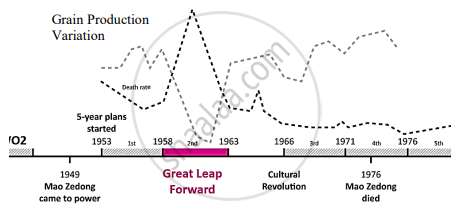
With reference to the above graph, explain the main features of the Commune system during the Great Leap Forward. What was there such a sharp spike in death rate as indicated in the graph above?
Chapter: [0.08] De-colonisation – in Asia (China) and Africa (Ghana and Keny
Explain any four reasons for the opposition to Apartheid government in South Africa.
Chapter: [0.1] Protest Movements
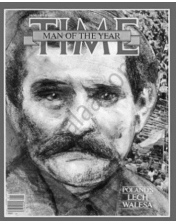
Discuss any four achievements of Lech Walesa to justify why he was featured on the cover page of the Time Magazine in 1982.
Chapter: [0.09300000000000001] Breakup of the Ussr and Changes in Eastern Europe
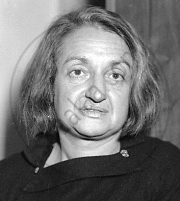
The picture give above is that of the author of the book, The Feminine Mystique. Identify the author. Discuss how this book sparked off the Second Wave of American Feminism in the 20th century.
Chapter: [0.1] Protest Movements
On the morning of June 3, 1947, the day the partition was announced, Mahatma Gandhi told Rajendra Prasad, “I can see only evil in the plan”.
- Identify the Plan that Mahatma Gandhi was referring to? State any three clauses of the Plan.
- Discuss any four reasons for the acceptance of the plan by major political parties of India.
Chapter: [0.015] Transfer of Power (1945-1947)
The Cripps Proposals for the first time proposed the formation of a Constituent Assembly.
- In the light of the above statement, enumerate the four proposals of Cripps Mission.
- Elucidate any four reasons that led to the failure of the Cripps’ Mission and eventually, to the Quit India Resolution.
Chapter: [0.013000000000000001] National Movement During the Second World War
Discuss any eight features of the Towards Equality Report of 1974.
Chapter: [0.06] Movements for Women’s Rights
Discuss the contributions of Martin Luther King Jr. in the campaign for Equal Rights in the United States of America.
Chapter: [0.1] Protest Movements
‘After its liberation in 1945, Czechoslovakia soon fell behind the ‘Iron Curtain’. That it would do so, was not a formality: the US could have brought the country into the Western Bloc – had it been so inclined.’
With reference to the above source, explain Stalin’s takeover of Czechoslovakia and its subsequent impact on the Cold War.
Chapter: [0.091] Origins of the Cold War
The Six-Day War between Israel and its Arab neighbours in 1967 was fought amid intense global tension and apprehensions that it might spread beyond. With reference to the Six-Day War of 1967, answer the following question.
- State any four causes for the Six-Day War.
- Why was the war a spectacular success for the Israelis but a humiliation for the Arab States?
Chapter: [0.11] Middle East: Israeli-Palestine Conflict (1916- 1993).
Submit Question Paper
Help us maintain new question papers on Shaalaa.com, so we can continue to help studentsonly jpg, png and pdf files
CISCE previous year question papers Class 12 History with solutions 2024 - 2025
Previous year Question paper for CISCE Class 12 -2025 is solved by experts. Solved question papers gives you the chance to check yourself after your mock test.
By referring the question paper Solutions for History, you can scale your preparation level and work on your weak areas. It will also help the candidates in developing the time-management skills. Practice makes perfect, and there is no better way to practice than to attempt previous year question paper solutions of CISCE Class 12.
How CISCE Class 12 Question Paper solutions Help Students ?
• Question paper solutions for History will helps students to prepare for exam.
• Question paper with answer will boost students confidence in exam time and also give you an idea About the important questions and topics to be prepared for the board exam.
• For finding solution of question papers no need to refer so multiple sources like textbook or guides.
